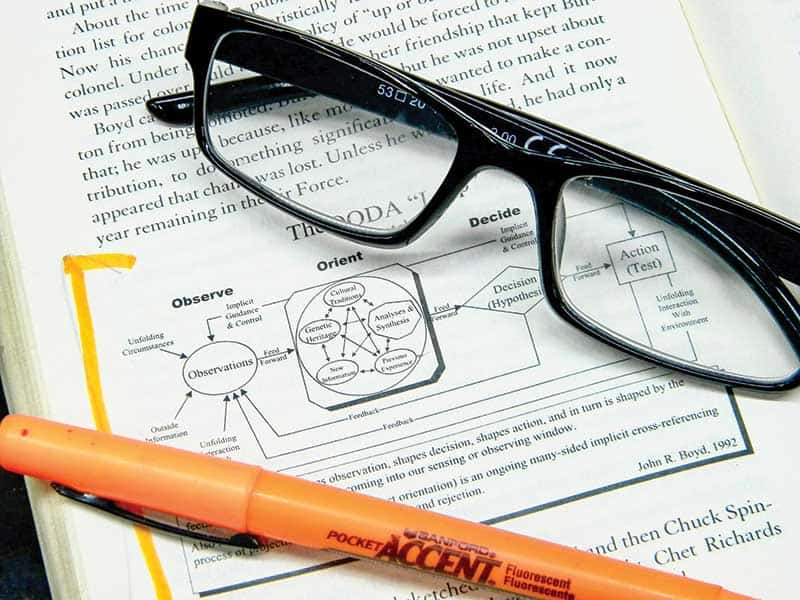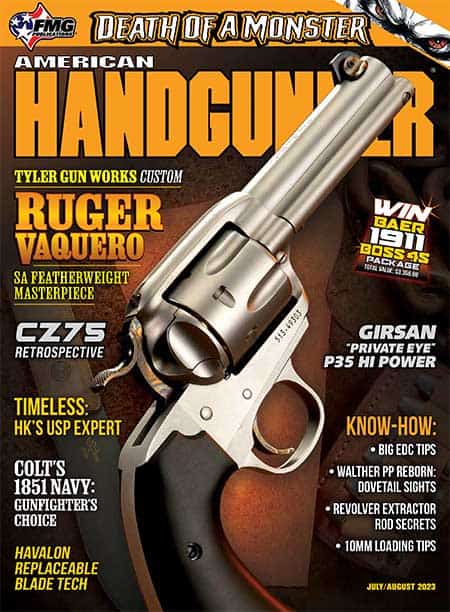Think: The 5th Fundamental
there are five fundamentals to the threat response. The first four are Move, Communicate, Use Cover and Shoot — if necessary. The fifth and most important fundamental is “Think.” Fighting is problem-solving at high-speed. In defense, the threat usually initiates violence. You’re already starting out behind; a speedy reaction is mandatory. The person who can make the appropriate decisions in a timely fashion, and act on them without delay, is the “winner.”
The majority of self-defense confrontations occur in a short span of time — a matter of a few seconds. You should be able to draw from concealment — which is how you carry — shoot accurately in a timely fashion and manipulate the pistol if needed at a subconscious level. The conscious mind thinks, “Threat.” The subconscious takes over to move, draw, position behind cover and fire if needed. This level of skill — which is only achieved through proper practice — frees up the conscious mind to think about solving the problem.
Train Your Brain
Most shooters who have received the proper training and practice with regularity can perform the actions above at an acceptable speed. Sure, you’re always striving to improve, but at some point, your practice should include decision-making. The real “speed” is in making the decision to move, draw and, if need be, shoot. Indecision on when to draw or shoot and you’ll feel the need to go fast. “Fast” is always full of mistakes, which just consume more time. Wait too long, and it won’t matter how fast you can perform; the opportunity has passed.
One of the best ways to think about problem-solving is Boyd’s O.O.D.A. Loop. John Boyd was an Air Force Col., fighter pilot and military strategist. Some would say a modern Sun Tzu. I highly recommend Boyd: The Fighter Pilot Who Changed The Art Of War by Robert Coram. His “loop” consists of Observe, Orient, Decide and Act. This is the key to finding a solution to trouble. You Observe a problem. In the Orient phase, you’re gathering details on what’s occurring. Then, you Decide on a solution. Finally, you Act.
Most people think of Boyd’s Loop as a sequential, linear action. But it’s more of a flow from and between the different phases. For example, the threat attacks. They are “acting.” You’re “reacting” in the Observation phase. You bypass Orient and Decide, jumping straight to Act by moving. This forces the threat back to the Observe state of their loop; they’re reacting to your movement. This buys you time to go back to Orient, gather a couple more details — looking for cover — then Decide, moving to the protection of cover. The goal is to never let the threat get back to the Act phase of their loop. Your “reaction” has beat their “action.”
Own The Flow
Once you initiate your response — Moving, Communicating, Using Cover and Shooting if required — do not stop or slow down. You’re constantly applying pressure to the threat, forcing them back to their Observe stage. Keep in mind, your decisions on what to do don’t have to be “perfect.” This traps you in the Decide stage, and there may not be a perfect response. You’re looking for a heuristic decision, one based on the minimal amount of information required and that’s “good enough” for the situation. Don’t second-guess your initial thought. This is usually the “right” answer. The speed of your action is what makes the difference. Not the speed of your performance, but again, making decisions and acting in a timely fashion.
Fighting is decision making at high-speed. Prior to becoming involved in a violent confrontation, you decide that no matter what happens, you will win the fight. You decide to practice the fundamentals — moving, communicating, using cover and shooting so these skills can be applied at a subconscious level. During the attack, you’re cycling through the O.O.D.A. Loop, rapidly making decisions on how to respond and then acting.
Does action beat reaction? Most people will answer, “Yes.” This is true, but only on a very simplistic level. Fighting is more like a game of chess. White always moves first, but this doesn’t guarantee victory. With the proper training, practice and development of your decision-making process, your “reaction” can beat the threat’s “action.”







